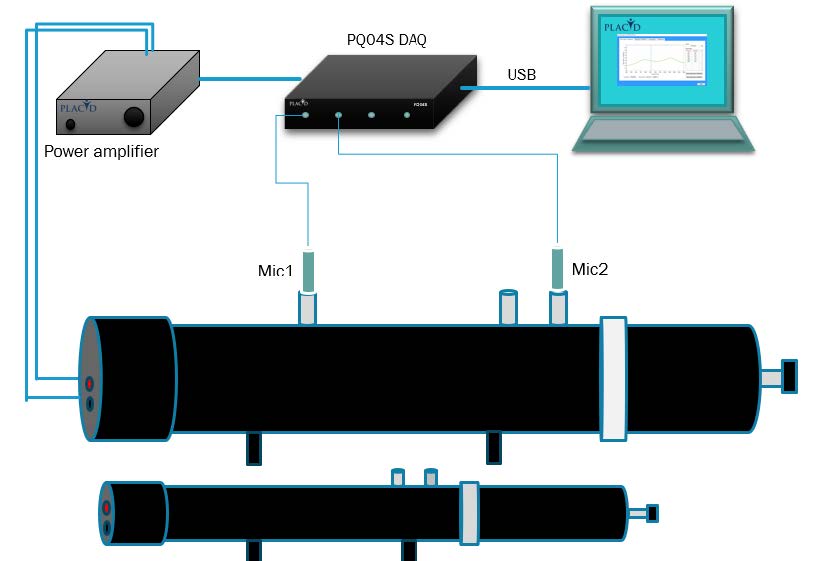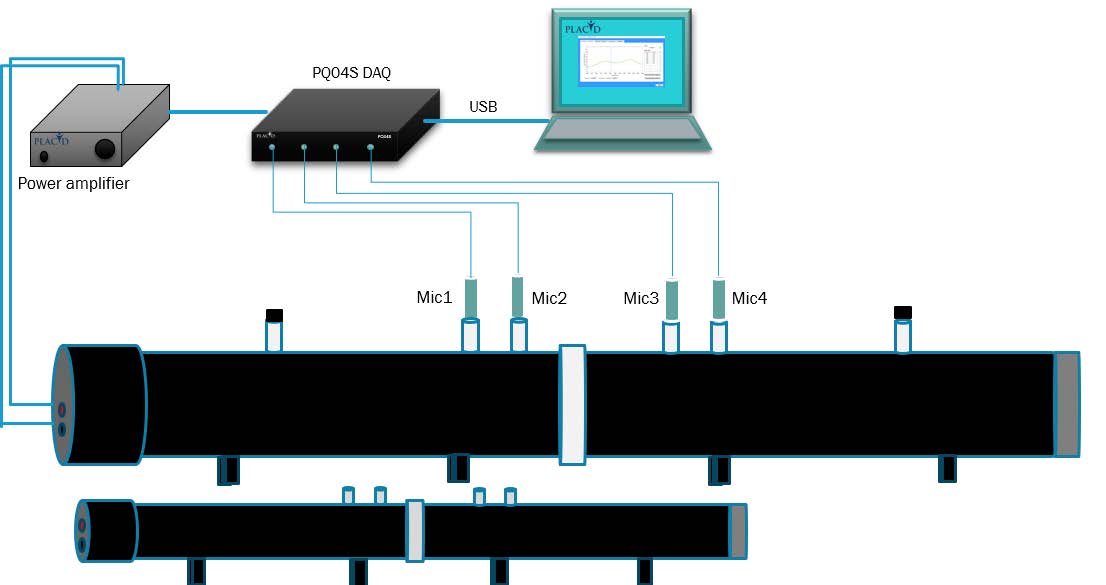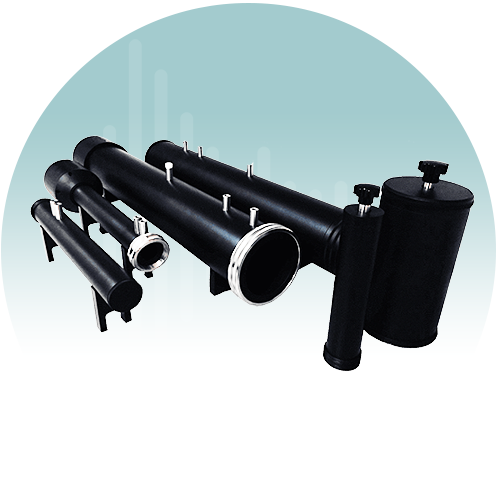PLACID Impedance Tubes
Sound Absorption | Sound Transmission Loss
PI88 ISO 10534-2, ASTM E1050-12, ASTM E2611-17
The Impedance tube (also known as Kundt Tube) measures, calculates and lets the user analyze Parameters like the Sound normal incidence absorption(Absorption Coefficient, Reflection Coefficient, Impedance, Admittance) and Sound Transmission/ sound insulation (Transmission Loss, Transmission Coefficient) of the material under test.
The results can be used to compare the basic absorption performance of the material and for acoustics simulations.
In practice, the absorbers can be quite large and their structure and configuration may be complex and part of acoustic designs. Furthermore, they will be exposed to real sound fields where the incident sound may come from many directions.
Accuracy
- The impedance tubes are available both with Class 1 or Class 2 microphone sets
Define material Characteristics
Materials in an acoustic application typically either are used for sound absorption or for noise transmission loss. Acoustic designers need to know the exact noise characteristics of a material to be able to make predictions. Testing a material in the Impedance Tube is quick and precise.
Acoustic material testing
- Sound Absorption Coefficient (alpha)
- Sound transmission Loss (TL)
- Standard lists :ISO10543-2, ASTM E1050-12, ASTM E2611-17, GB/T-18696
- Frequency Range: 50-10000Hz
Features
- Transfer function method 2 microphones
- Wide range Testing
- Plug and Play DAQ System
APPLICATION
- testing of material characteristics and verifying material compliance before implementing the materials in the assemblies
- design of acoustic comfort in aircraft, helicopters, ships, yachts and vehicle interiors by selecting the optimal acoustic treatments and noise barriers
- research and development of noise control products by benchmarking competitive products
- research jobs for students and universities
- validating and calibrating theoretical computational methods such as acoustic modeling
ABSORPTION
Sound absorption measurement obtains Absorption Coefficient, Reflection Coefficient, Impedance and Admittance of testing materials
The results can be used to compare the basic absorption performance of the material and for acoustics simulations. In practice, the absorbers can be quite large and their structure and configuration may be complex and part of acoustic designs. Furthermore, they will be exposed to real sound fields where the incident sound may come from many directions.
The Impedance tube kit can determine the sound absorption coefficient as well as the transmission loss.
PI8810
100 mm Impedance tube, frequency range 50 Hz – 1600 Hz
PI88016
16mm Impedance tube, frequency range 2500 – 10000 Hz
PI8803
30 mm Impedance tube, frequency range 800 – 6300 Hz
Microphones
1/4″ Class 1, 20 Hz to 20 kHz (BNC to SMB connector)
Impedance tube can measure sound absorption coefficient as well as transmission loss, ISO10543-2, ASTM E1050-12
Sound absorption measurement setup

Sound transmission loss setup

SOUND ABSORPTION / TRANSMISSION LOSS DESCRIPTION
| Measurement | Sound Absorption | Sound Transmission Loss |
|
Tubes |
50 Hz to 1600 Hz 100 mm Diameter Tube 100 mm Sample holder 800 to 6400 Hz 30mm Diameter Tube 30mm Sample holder 2500 Hz to 10000 Hz *16 mm Diameter Tube *16 mm Sample holder |
50 Hz to 1600 Hz 100 mm Diameter Tube 100 mm Extension holder 800 to 6400 Hz 30mm Diameter Tube 30mm Extension holder 2500 Hz to 10000 Hz *16 mm Diameter Tube *16 mm Extension tube |
| Data Acquisition | 4 Channels IEPE input A/D converter 16/24 bit | 4 Channels IEPE input A/D converter 16/24 bit |
| Microphones | X2 ¼” Class 1 or 2, 20 Hz to 20 kHZ with BNC to SMB connector | X4 ¼” Class 1 or 2, 20 Hz to 20 kHZ with BNC to SMB connector |
| Microphones cable | X2 BNC to SMB | X4 BNC to SMB |
| Power amplifier | 50W ultralow distortion | 50W ultralow distortion |
| Power amplifier cable | Banana cable | Banana cable |
| Sound Source | 4” loudspeaker 20W 4ohm | 4” loudspeaker 20W 4ohm |
| Sound Calibrator | 94/114 dB at 1000 Hz | 94/114 dB at 1000 Hz |
| Measurement Software | Sound Absorption testing | Sound Transmission Loss testing |
Please Click and Download this product datasheet for further information








